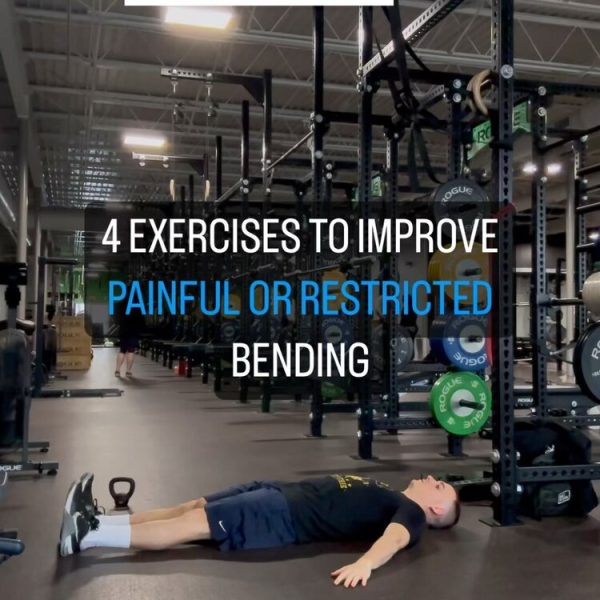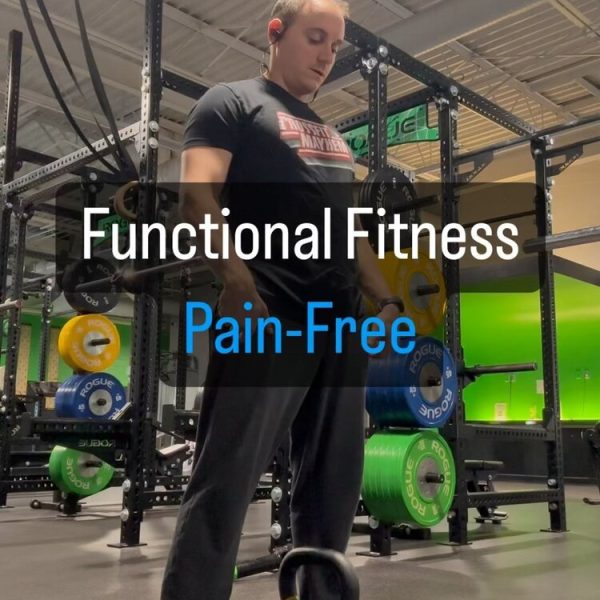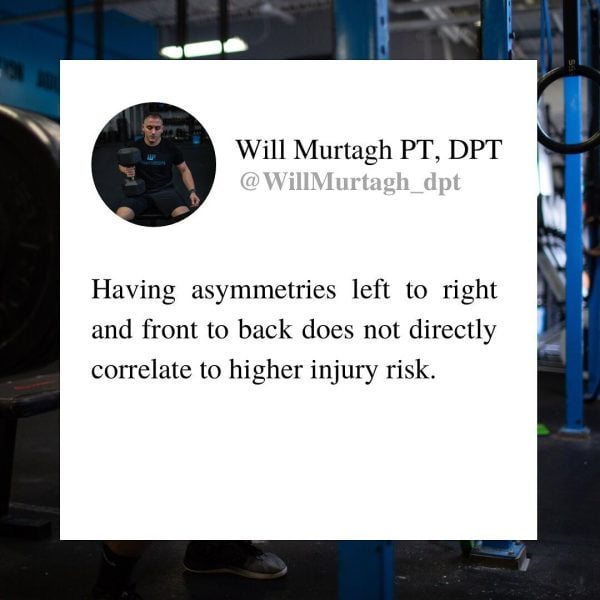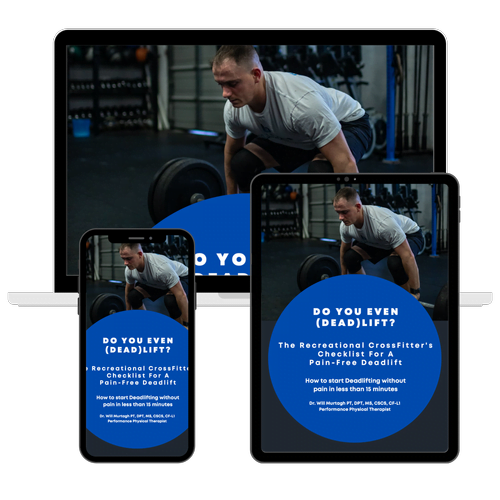Dr. Will Murtagh is a performance physical therapist and writer who helps Fitness Athletes elevate their fitness and train pain-free.
As an affiliate partner of various brands and sponsored content, WillPower Strength & Nutrition may earn commission on qualifying purchases at no additional cost to you.
It is estimated that 80% of people will eventually experience lower back pain in their lifetime. So, unfortunately, if you are someone who trains hard, there is most likely a chance that you have experienced it once in your life. Maybe you are experiencing it right now.
I have had my own issues with extension intolerant back pain to the point where I couldn’t walk for 3 days. It was not fun and I’m sure if you are currently dealing with or have dealt with your own lower back pain you would say the same.
But, there is hope. I know that as a Physical Therapist that with a consistent and progressive training program low back pain can be resolved and prevented from ever coming back again.
The first step in designing this training program is to classify what triggers your lower back pain.
We can classify low back pain using simple and quick screens to determine if you are sensitive to lumbar flexion, or lumbar extension, or if the load is the cause of your intolerant low back pain.
I have come to learn these quick screens from the work done by Dr. Aaron Horschig from Squat University who has learned them from clinicians before him such as Dr. Stuart McGill.
Please know that each of these classifications does not mean that you should never perform these movements. More so that it would be a good idea to avoid them in the short term until your nervous system and lower spine can move through the healing process and feel safe moving outside of a neutral position.
As well as until the movement patterns can be retrained and fortified using the best exercises for your specific type of pain in your lumbar spine. Learn how to classify your lower back pain by reading more below!
1) Flexion Intolerance
When someone is considered to have Flexion-Intolerant back, this indicates that spinal flexion or flexing the spine forward such as bending over in a hip hinge to pick something up off the floor will trigger their lower back pain. You will often see this type of classification with people who have recently suffered a lumbar disc herniation. Although lumbar disk herniations can happen and be symptom-free, flexion-intolerant pain is a common trigger with this diagnosis.
A quick screen to see if you have a flexion intolerance involves sitting on a stool or chair, assuming a flexed or “bad” posture, and then using your arms to pull down on the sides of the chair. A positive test result for this screen would be an increase in your lower back pain and thus reveal it is likely that you are considered Flexion Intolerant.
2) Extension Intolerance
Extension intolerance is the exact opposite of Flexion Intolerance. This specific category is often seen with people who experience lower back pain laying on their stomachs or with athletes that have repetitive spinal extension in their sport such as throwing objects.
As well as strength athletes who perform high-volume extension exercises in their training A quick screen for an Extension Intolerance would be a Seated Extension Pull Test or simply lying face down on the floor. The Seated Extension Pull Test is the same as the Seated Flexion Pull Test but in the opposite direction. Lower back pain with either of these two tests would suggest an extension intolerance.
3) Extension With Rotation Intolerance
When trying to classify low back pain we are simply trying to discover spinal movements that trigger pain. The lower spine will flex and extend but also rotate. The Prone Hip Extension Test adds rotation to see if this triggers pain.
The test begins with laying flat on the ground and then lifting one leg off of the floor. If this causes lower back pain, add a pillow under your hips and repeat the movement. If your lower back pain changed at all, this would indicate that your low back hurts as a result of a rotation intolerance when the lumbar spine is in an extension position extension. This specific category is seen in people who have pain with running or certain Olympic lifts.
4) Load Intolerance
The final classification is as the name implies, for people who experience lower back pain when some sort of load is applied to the spine in a neutral position. This can be through ground reaction forces or compression of the lumbar spine by the core and back muscles from bracing to lift an object. The two tests to classify this intolerance is the Heel Drop Test and The Weighted Front Raise Test.
The Heel Drop Test is performed by simply raising onto your toes and then quickly dropping to your heels. If this caused lower back pain repeat the test but with your core muscles braced. If pain was not triggered, improper bracing could be the cause of your lower back pain. If pain was still triggered, this could indicate dynamic load intolerance and a potentially more serious issue occurring at the spine such as an End Plate fracture.
The Weighted Front Raise Test is another test to test for load intolerance from the compressive load. Simply stand in a neutral spine posture with a weight held in front and perform a front raise. If pain was triggered as a result from your core muscles bracing, a compressive load intolerance would be indicated.
These classifications are a great way to begin to better understand your lower back pain. Once you can identify what causes your pain you can then design a training program using simple exercises to start and ten following intelligent exercise progressions that can alleviate your symptoms and prevent low back injuries from returning.
It should be stated though that these tests serve as a quick screen and a more thorough evaluation should occur to evaluate your pain by a health professional.
Please note that there are many reasons for lower back pain and some can indicate red flags which indicate serious medical issues. This article was simply for educational purposes and I advise you to seek out a health professional if your back pain is accompanied by weight loss or changes in bowel or bladder function or is persistent.
Treatment Options Based On Low Back Pain Classification
Once you’ve classified your low back pain triggers, effective treatment often involves corrective exercises tailored to address the source of pain. These approaches mirror the exact methods employed in my 1:1 Pain-Free Performance Program, where clients achieve pain relief without sacrificing valuable gym time or transforming workouts into lengthy rehab sessions.
Examining your pain triggers allows for a targeted exercise progression designed to alleviate discomfort and enhance your performance, focusing on addressing specific findings from your assessment.
Fixing Extension Intolerant Back Pain
Addressing extension-intolerant back pain involves targeted strategies to alleviate discomfort and improve movement patterns. For individuals experiencing pain due to spinal stenosis or extension-based issues, exercises emphasizing motor control and gradual progression play a pivotal role.
These methods aim to improve stability and flexibility, reducing pain triggers associated with extension movements. Tailored exercises such as dead bugs, Posterior pelvic tilts and other exercises for the abdominal muscles that improve anterior core control. These exercises can assist in enhancing core strength and promoting a neutral spine posture, contributing to improved function and reduced discomfort in extension-intolerant back pain.
Fixing Flexion Intolerant Back Pain
Dealing with flexion-intolerant back pain, particularly concerning intervertebral disc issues like disc herniations, requires a targeted approach. Opting for exercises and progressions aligned with the McKenzie Method and emphasizing extension-based exercises become crucial. When managing flexion-intolerant pain, it’s essential to avoid exercises that involve spinal flexion initially.
Instead, focusing on exercises that promote extension without exacerbating pain is key. Adopting modified exercises like specific bird dogs variations, or incorporating extension-focused routines can aid in strengthening the back muscles while avoiding further stress on the discs, contributing to improved pain management and functional movement over time.
Fixing Extension With Rotation Intolerance Back Pain
Addressing back pain associated with extension and rotation intolerance, especially related to facet joint syndrome, involves targeted rehabilitation approaches. Facet joint pain due to the specific nature of extension and rotation triggers necessitates exercises promoting spinal stability and mobility throughout rotation.
Opting for exercises emphasizing core stability while enhancing spine rotation mobility becomes crucial. Incorporating exercises such as modified planks with rotation, side plank variations, or even gentle yoga poses like the cat-cow or open books can aid in strengthening the core muscles and improving spinal mobility.
As well as hip flexor and quadratus lumborum flexibility soft tissue work with devices like the Theragun Pro or the Hypervolt Massage Gun and strengthening exercises to decrease any imbalances causing rotations during movements like running. These targeted exercises help in managing extension and rotation pain to reduced discomfort and improved functionality over time.
Fixing Load Intolerance Back Pain
Addressing back pain associated with load intolerance requires a nuanced approach focusing on proper bracing techniques and controlled movement. It’s essential to seek medical advice if there’s suspicion of an end plate fracture, particularly with persistent or severe pain. For managing load intolerance without suspected fractures, prioritizing proper bracing techniques under heavy loads becomes pivotal.
Engaging the core muscles effectively through bracing, utilizing the “internal belt” created by the deep abdominal muscles, provides stability and support to the spine. Incorporating motor control-focused exercises that emphasize controlled movements, such as modified deadlifts or squats with guided breathing and gradual weight increments, can aid in improving bracing ability under load.
Additionally, utilizing the Valsalva maneuver, in the absence of chronic high blood pressure, can assist in creating intra-abdominal pressure, enhancing spinal support during heavy lifting without compromising safety.
My Experience With Fixing My Low Back Pain
I have had my fair share of low back pain that has gotten in the way of my training. Ater a tough cycle of Olympic Lifting I had walked into the gym and actually set two new personal records. A new Snatch and Back Squat PR then the stars just happen to align and when I bent over to pick a weight up I felt something shift in my lower back. The rest was history.
The next 3 days I could not even stand on my own two feet let alone get back into the gym to train. Once I could stand I knew something had to change in how I trained. Over the next 6 months I used the same strategies that I mentioned above in this article to assess my movement and source of pain, design a corrective exercise program based on what I needed specifically and then ultimately incorporate my newly fortified system back into the exercises that were once painful to perform.
Today I am back to training hard and setting new PR’s and I have designed a whole business based on helping others do the same. I can confidently say that my clients consistently come to me when they are struggling with lower back pain and have run out of options.
They don’t want to stop training and lose the fitness gains they have worked so hard to build and they don’t one to be just another number in a traditional mill of a physical therapy clinic.
They want to keep training hard while they correct their movement dysfunction and get back to pain-free training. This is why I created my 1:1 Pain-Free Performance Program where I help functional fitness athletes eliminate pain while they train without having to miss time in the gym or turn their workouts into rehab sessions.
If you feel like you just can’t train the way you used to and are fed up with dealing with lower back pain I would love to chat to see how I can help. Simply CLICK HERE to schedule a risk free consultation. I look forward to chatting with you!
Remember: this post is for informational purposes only and may not be the best fit for you and your personal situation. It shall not be construed as medical advice. The information and education provided here is not intended or implied to supplement or replace professional medical treatment, advice, and/or diagnosis. Always check with your own physician or medical professional before trying or implementing any information read here.













